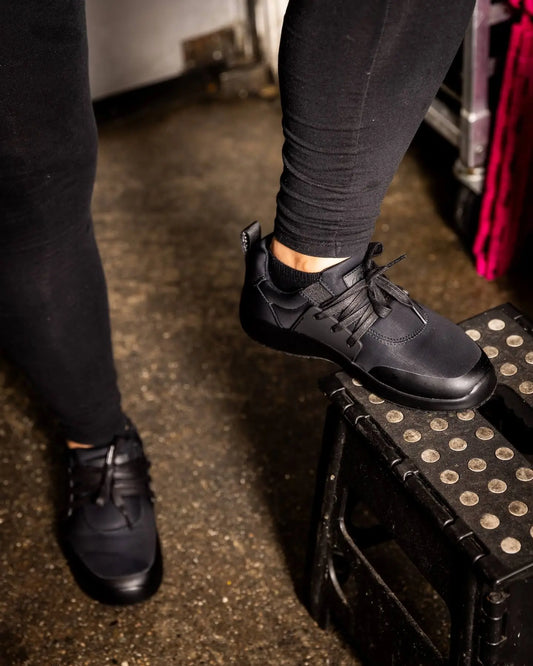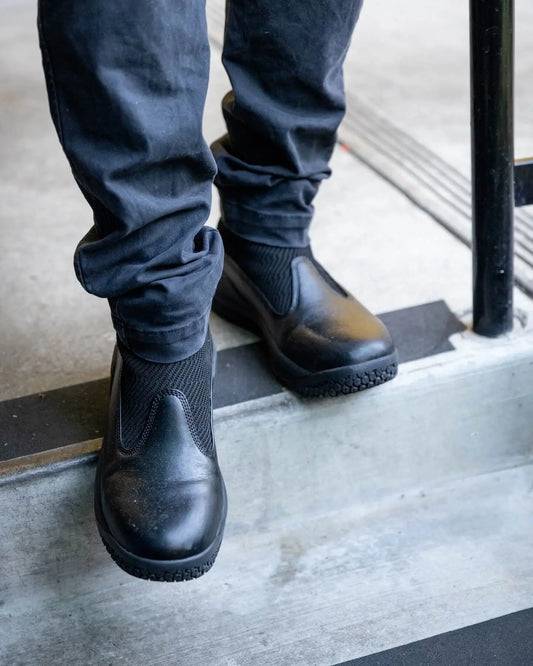What is EVA Foam?
Alex Kinejara
Shoes come in all shapes and sizes (you might not be wearing a pair if they didn’t!), but they’re also made from all types of materials. Ethylene vinyl acetate—better known as EVA—is among the most common of those materials, and is often turned into a usable foam. But what is EVA foam useful for, exactly?
Used in everything from cling wrap to hockey pads, the material is as versatile as it is resilient. It doesn’t slip or scuff easily, absorbs impacts like a champ, and is resistant to cracking—ideal qualities for any type of shoe.1 Often placed in the midsoles, EVA foam material promotes stability and relieves your feet from the pressures of moving around.2
There’s obviously more to this shoe-padding material than meets the foot, so let’s continue to explore the ins and outs of EVA foam, from whether it qualifies as a rubber or a plastic to its eco-friendly ranking.
What Is The Difference Between Foam And EVA Foam?
There is an abundance of foams out there, but polyethylene (PE) foam is perhaps the most widely used.3 It shares a number of similarities with its EVA cousin, and they can be used interchangeably—to a certain degree.
To that end, let’s explore four factors that differentiate EVA from PE:
Is EVA Rubber Or Plastic?
The higher the amount of vinyl acetate there is in EVA foam, the more flexible it will be. At 40% and up, the end product is often referred to as EVA foam rubber for how malleable it is.5 Yet, for all that, every form of EVA foam belongs in the plastic family.
Rubber is derived from natural rubber plants, though it can also be man-made using oil. Plastic, on the other hand, is always man-made.6 Ethylene and vinyl acetate are each their own plastics, combined through the magic of chemistry into EVA copolymer.
The question is, if EVA foam and rubber are so similar, which is better?
Is EVA Better Than Rubber?
Once again, the debate comes down to differences:7
- EVA foam armor is lighter and softer than rubber, making it more malleable while providing less protection and shock absorption against the likes of foreign objects.
- Rubber doesn’t deform as easily and has a stronger grip and resistance than EVA foam, but is also less flexible.
So, one isn’t necessarily better than the other—it depends more on what you need them for.
Is EVA Foam Eco-Friendly?
Determining whether or not something is environmentally friendly is kind of like ticking boxes off a checklist8: Is it biodegradable? Are the materials involved extracted from renewable resources? How much energy was expended to produce it?
Like most plastics, EVA foam in its raw form is not exactly one of Mother Nature’s favorite human inventions. Here are a few reasons why:55
To EVA foam’s credit, it contains far fewer chemicals than PVC (including BPA, which can affect human health) and can now biodegrade faster thanks to the discovery and implementation of a new manufacturing additive. Even then, it’s no environmental angel.
Shop Sustainable, Slip-Resistant Shoes With Snibbs
You care about how the pair you wear looks and feels, and so do we. Our mission, after all, is to provide slip resistant shoes that reconcile function with fashion.
Designed to shrug off water spills, promote proper foot alignment with deep heel cups, and grip rather than slip, Snibbs athletic shoe materials can’t be beaten for long work days. They also can’t be beaten when it comes to eco-consciousness.
Knowing the environmental impact that EVA foam can have—not to mention how 95% of shoes end up in landfills every year—we’re committed to making Snibbs with recycled materials and biodegradable additives. From post-consumer plastic bottles in the uppers to recycled cotton in the laces, we’re slowly but surely approaching a 100% recycled shoe. If you find yourself wondering, “what is sustainable footwear,” our resource center can help you become an expert at picking out those earth-friendly shoes when shopping.
With your support, we’ll get there in no time.
Sources:
- Custom Case Group. EVA FOAM – 3 THINGS TO KNOW (CHEAT SHEET). https://customcasegroup.com/news/eva-foam-3-things-to-know-cheat-sheet/
- Best Walking Shoes Review. The Importance Of Having Shoes With EVA Midsoles. https://bestwalkingshoereviews.com/the-importance-of-having-shoes-with-eva-midsoles/
- Trocellen. Which are the features of the PE foam if compared to the EVA foam? https://trocellen.com/2021/10/04/features-pe-foam-compared-eva-foam/
- Sciencing. What Is the Difference in EPE Foam & EVA Foam? https://sciencing.com/difference-between-polystyrene-polyurethane-8730934.html
- Citizen Sustainable. Is EVA Eco-Friendly? 14 Facts You Should Know (+3 Alternatives). https://citizensustainable.com/eva-recyclable/
- Pediaa. Difference Between Plastic and Rubber. https://pediaa.com/difference-between-plastic-and-rubber/
- Bindley Hardware Co. Which is better, EVA or rubber? https://bindleyhardwareco.com/which-is-better-eva-or-rubber
- Green Built Alliance. Checklist: What makes a product green? https://www.greenbuilt.org/articles/161-checklist-what-makes-a-product-green/
- Midori Bio. Midori Biodegradable Solutions. https://midori-bio.com/biodegradable-solutions/














